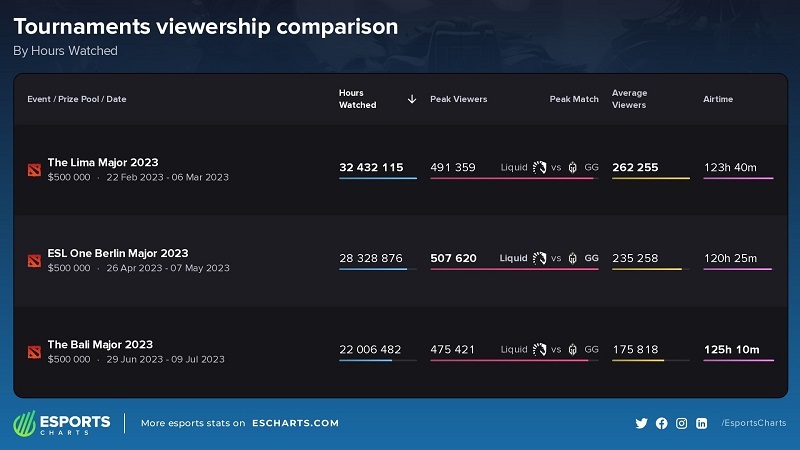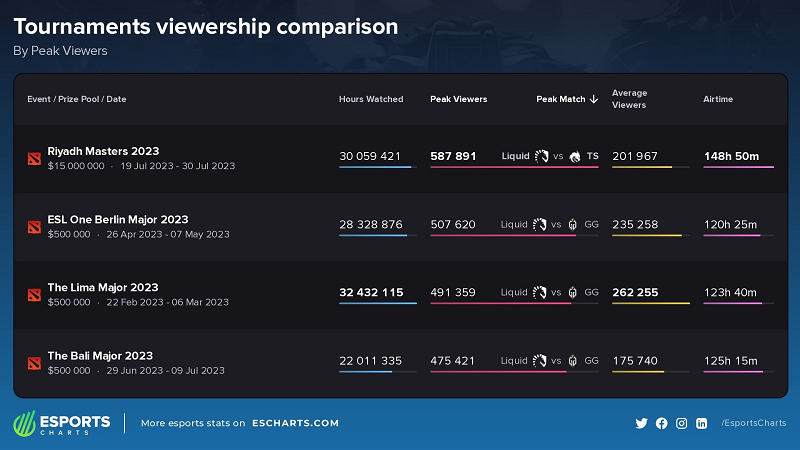For the last six months, we have been immersed in Tier 1 Dota 2 events.
Since January there have been three DPC tours, three Majors, two DreamLeague Seasons, and Riyadh Masters.
That’s a whopping 2,486 games played.

But what about the viewer?
Riyadh Masters' games were covered on44 different channels, including official studio channels and community caster streams.
So how would over-saturation and viewer fatigue be measured?

If they were real facts, it would surely reflect in the viewership numbers, right?
Image courtesy of EsportsCharts
But that snapshot doesn’t seem to have the entire picture in view.
It wasn’t just this season.

Bali Major had the lowest viewership in the last two years.
In addition, the timezone was unfavorable for Western viewers.
The event was dominated by Europe.
None of the SEA teams made it to the playoffs stage.
Then, we have Riyadh Masters.
And that seems to have pulled in even more viewers, not less.
This would suggest that over-saturation and viewer fatigue is a myth, an urban legend.
It’s not real and can’t hurt you.
According to our Dota 2 overlords, over-saturation and viewer fatigue do exist and they can be harmful.
Valve just announced a format and schedule change for The International.
Clearly, broadcast viewership numbers are not the only metric available, or used.
And TI will now be weekend-warrior friendly.